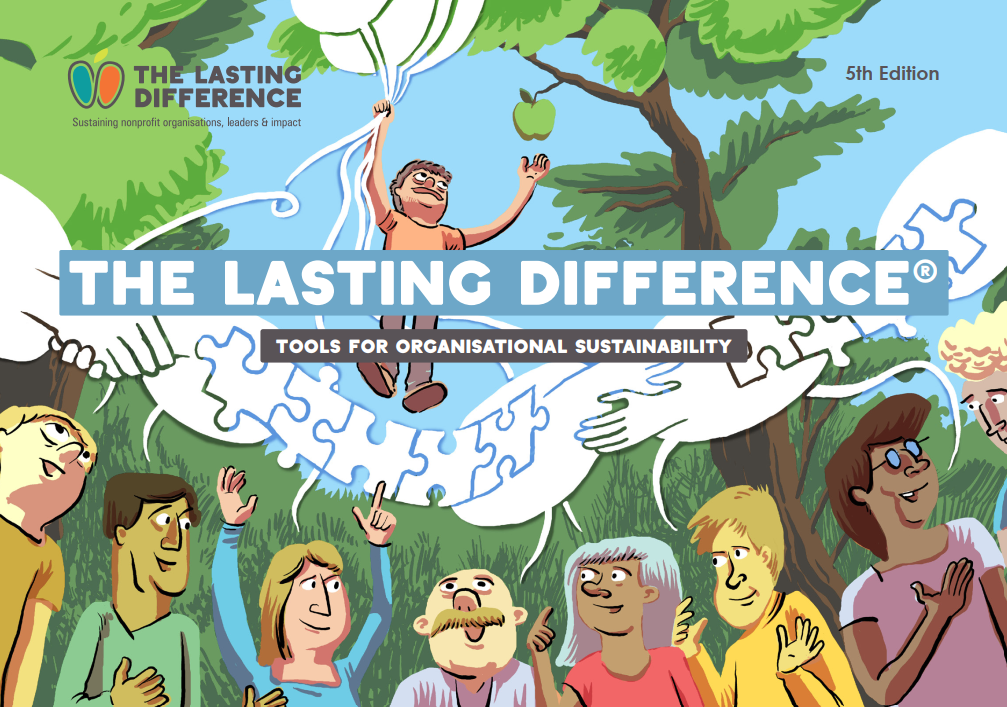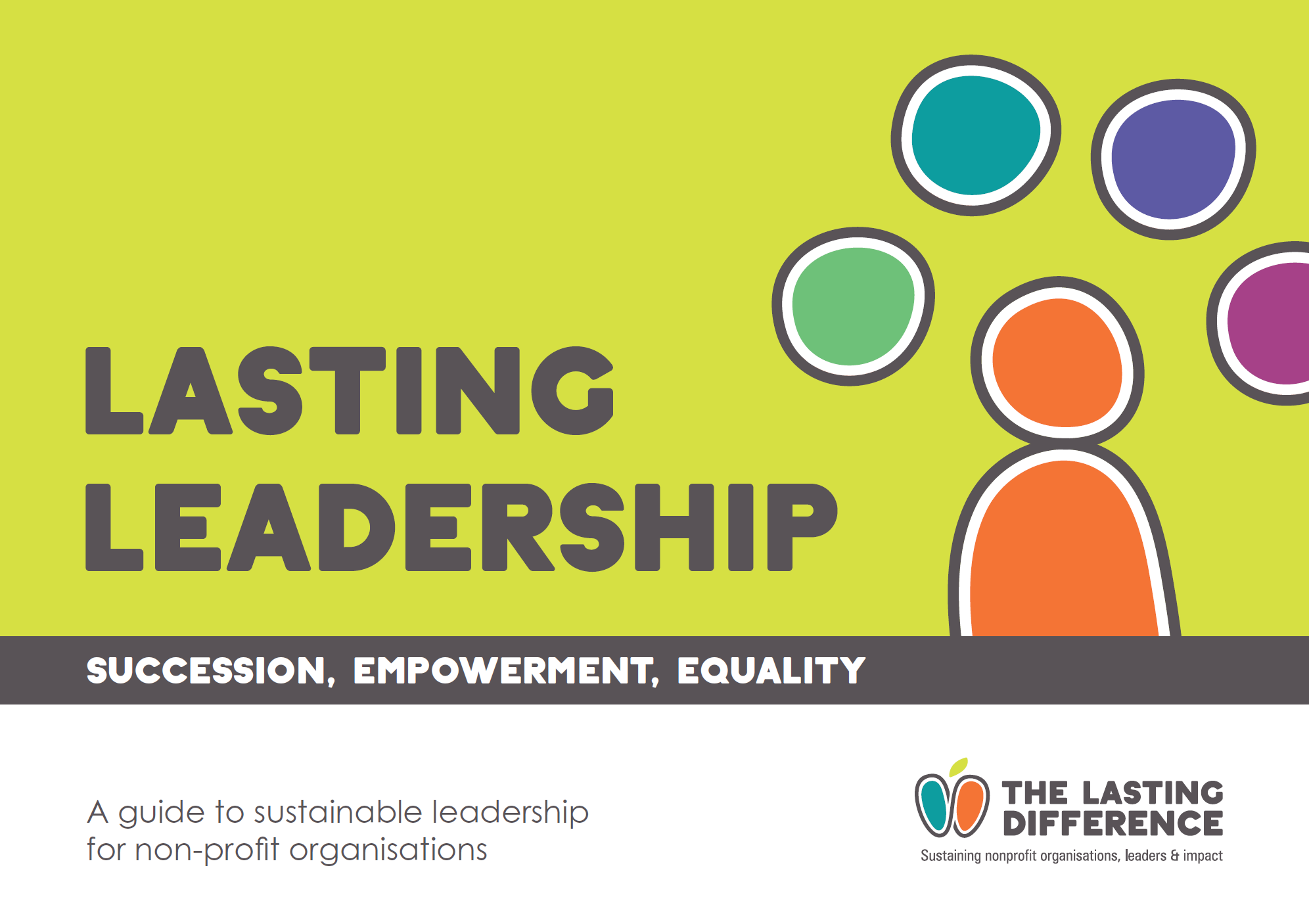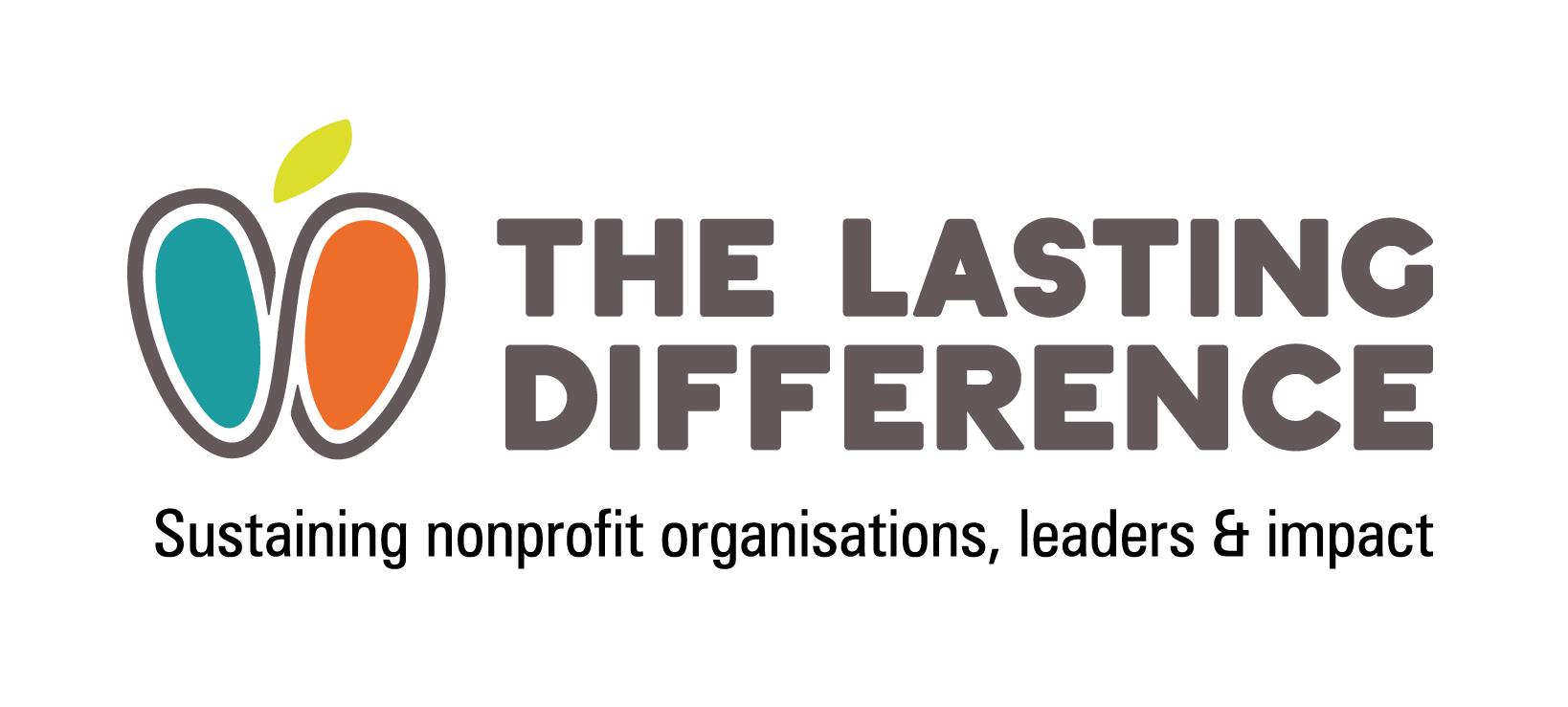Welcome to the home of the
renowned Lasting Difference and
Lasting Leadership Guides.
Our free guides and the consultancy practice we base them on aim to be:
- Clear: Easy to understand and use, with straightforward ideas for action.
- Practical: Grounded in practice, with tried and tested tools and templates.
- Provocative: Reframing your key challenges with new definitions and fresh perspectives.
- Powerful: Transforming the way you think about – and run – your organisation.
- Relevant: Suitable for projects or organisations, large or small, in any part of the non-profit world.
Please note: I’m usually booked up 3-6 months in advance, so if you’d like to enquire about working together please check your vision fits with our strategic plan then give me a shout.


Lasting Leadership® defines and demystifies sustainable leadership. Made up of four guides focusing on succession planning, lateral leadership, equalities, and self-care, it addresses the key issues of the day. Perfect for managers, trustees and anyone wanting to develop leadership capacity. Your writeable PDF copies await!
New to sustainability?.. Start here
The Lasting Difference
Graeme Reekie, author of the Lasting Difference resource, explains where the ideas and toolkit originated, and some of the principles that underpin it.
The paradox of change
Sustainability isn’t easy. The challenges are complex and often paradoxical – more of one thing often means less of something else. First up, the paradox of change: only by changing can we stay the same.
The octopus paradox
If sustainability requires us to change and develop, can we do this without getting pulled out of shape? There are good reasons many organisations are octopus-shaped, as Graeme explains in this short clip.
The yes/no paradox
We often say ‘yes’ to things because we think they will help us survive. Yet most organisations have sustainability challenges because of saying yes, not in spite of it.
The efficiency paradox
To be sustainable, organisations must be efficient. But if they are too efficient, they won’t have the spare capacity, resources or headspace to be sustainable.
‘Lasting Leadership’ overview
A 15-minute presentation on Lasting Leadership®, the guide to non-profit sustainable leadership. Shorter, specific clips are available on the dedicated Lasting Leadership page.
Survival and sustainability – HomeStart case study
Making a Lasting Difference programme for the Home-Start federation I've been asked recently to describe a bit more fully how I work. This case study is a fairly typical example of how I work with membership organisations and funders to build their partners' capacity...
Sustaining change – learning from practice
Every two years we invite inspiring people and partners to join us for a tranquil three-day residential. We share gifts and challenges in a relaxed, trusting environment. This year the focus was on sustaining change. What have we learned from the scale and pace of...
Sowing seeds for sustainability
Sowing seeds for sustainability This case study shares learning from a recent workshop programme, building sector sustainability with a focus on equalities. Carers Trust is a major UK charity improving support, services and recognition for unpaid carers. With 122...
Championing voices with ‘Stop it Now!’
We are all part of the system Lasting Difference symbol holder, Stop it Now! Scotland have been developing creative ways to lead system change by championing voices and creating opportunities for collaboration. After all, the sustainability challenges that face our...
Collaborative commissioning – sharing learning
We've just released the report sharing learning from a collaborative funding programme I've been supporting since 2017. I'm very proud of it, see what you think! Promoting Variety gives unpaid carers and those they care for access to a wider range of short break...
Sustaining carer support – case study
This case study shines a light on system leadership: sustaining support for unpaid carers. Short breaks play a critical role in supporting unpaid carers and people in need of care. However, the respite care sector in Scotland faces many challenges that puts both its...
GET INVOLVED
Sign up for our occasional newsletter for new ideas and resources.
Subscribe to get The Lasting Difference toolkit
By submitting this form, you will are opting to subscribe to receive occasional updates about sustainability. You can unsubscribe at any time by clicking the link in the footer of our emails. We use Mailchimp as our marketing platform. By clicking below to subscribe, you acknowledge that your information will be transferred to Mailchimp for processing. Learn more about Mailchimp's privacy practices here.

